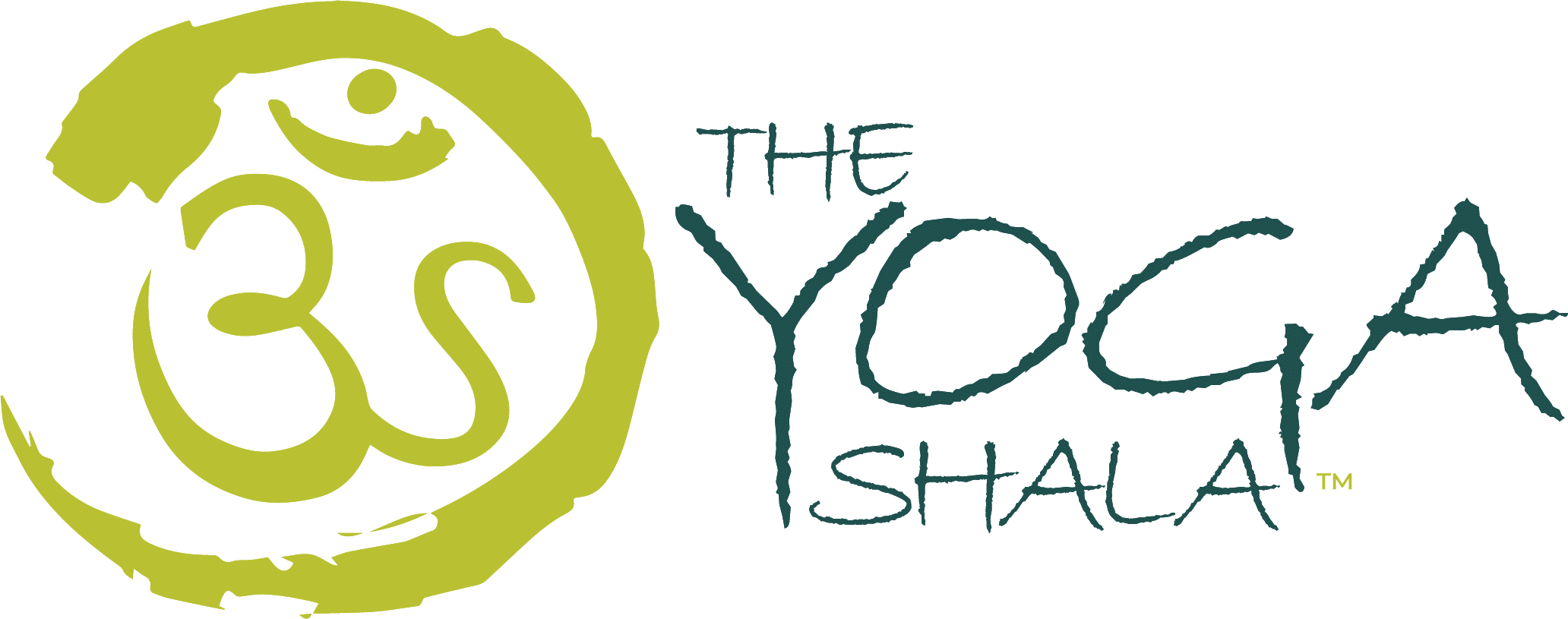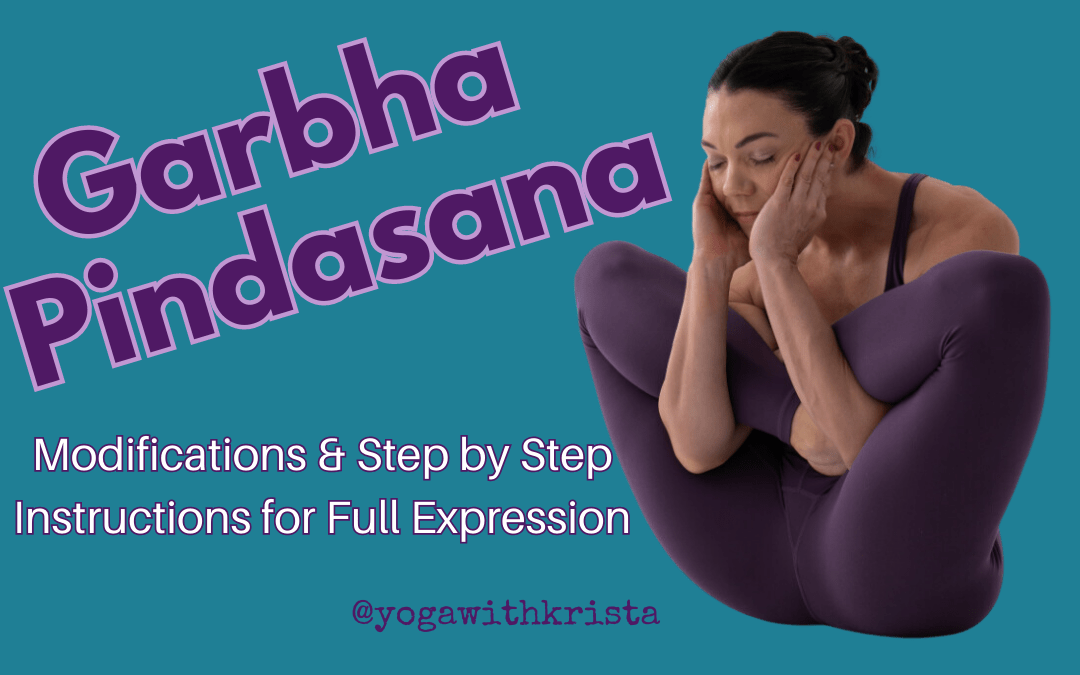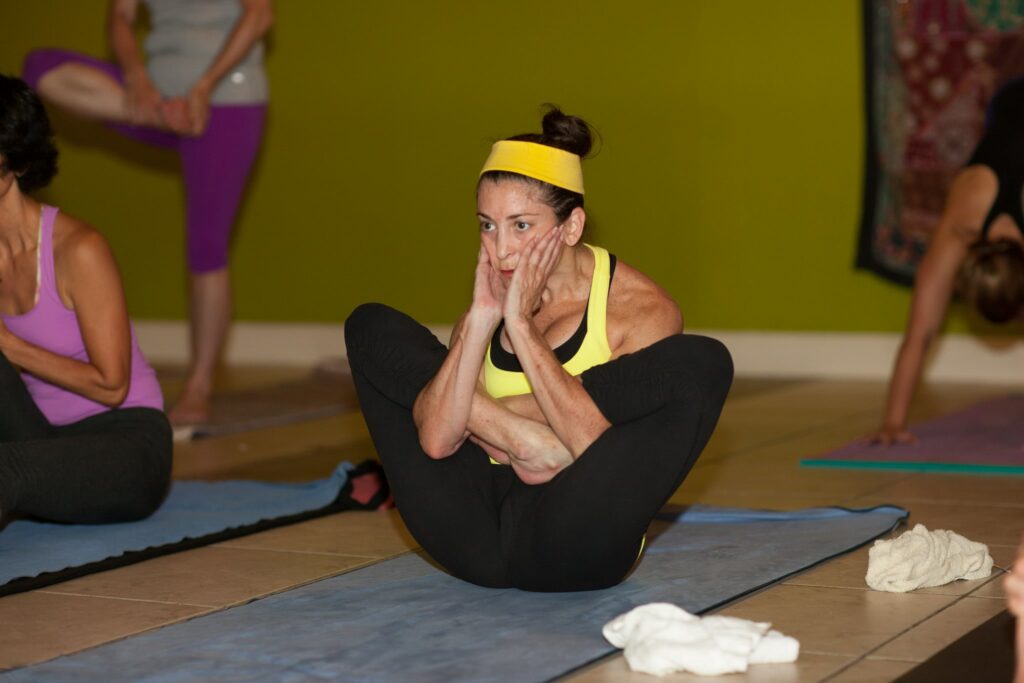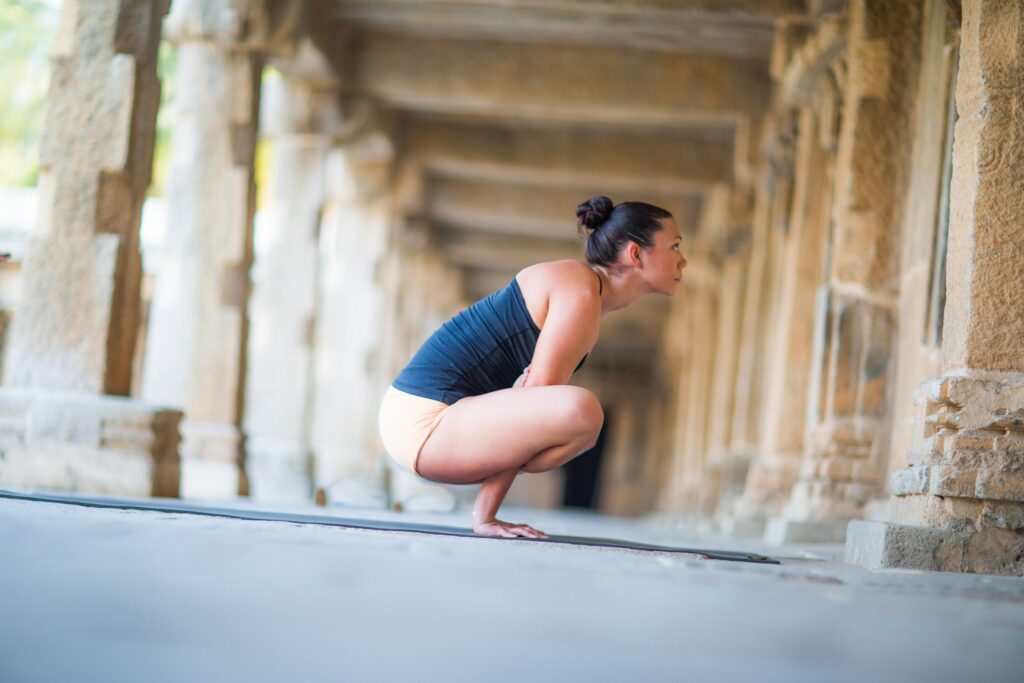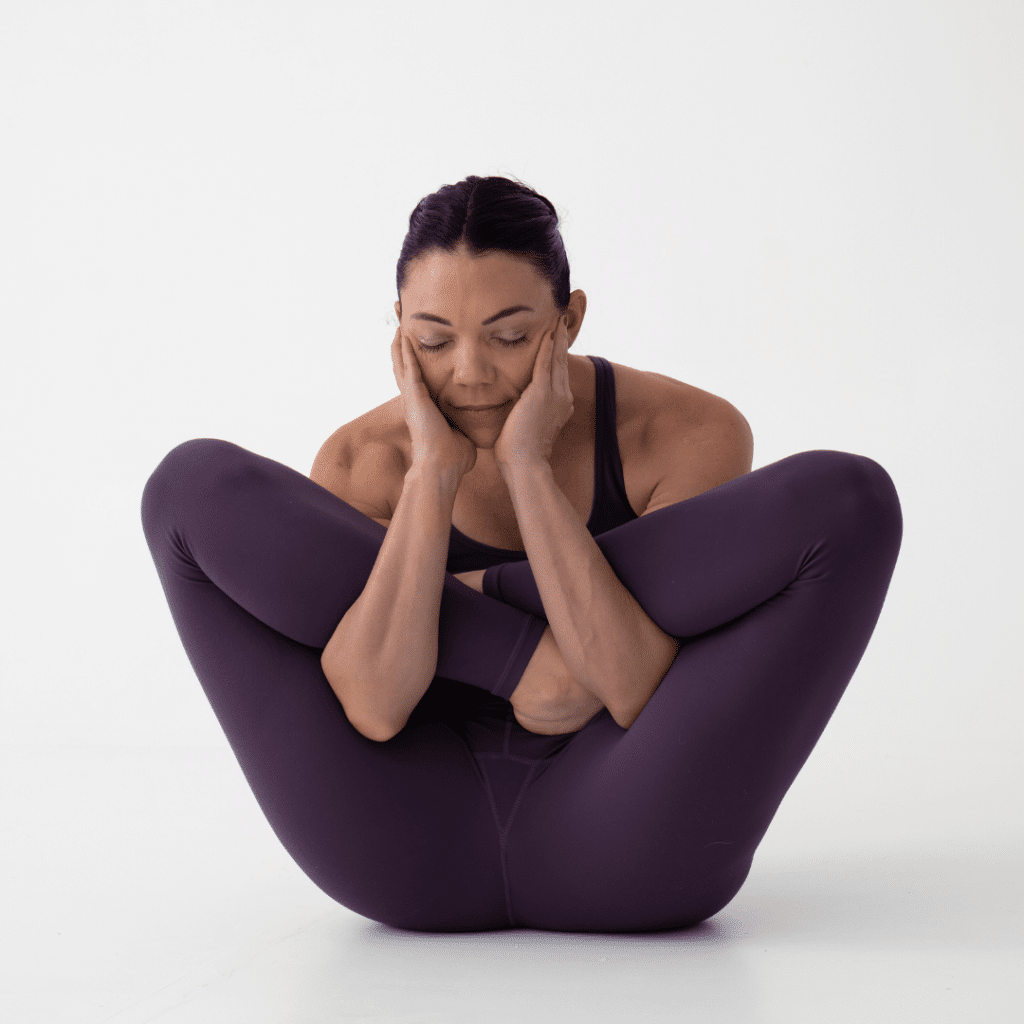Click here to watch the YouTube tutorial for Garbha Pindasana and Kukkutasana
Ashtanga Yoga, “eight-limbed” yoga, is a dynamic and structured practice that encompasses a wide range of postures designed to harmonize the body, mind, and spirit. Seated postures play a vital role in this practice, as they allow practitioners the opportunity to delve deeper into self-awareness and build a strong foundation for the more advanced poses. Two such intricate seated postures are Garbha Pindasana and Kukkutasana, each offering unique physical and mental benefits.
Garbha Pindasana: The Embryo in the Womb Pose
Garbha Pindasana, often translated as the “Embryo in the Womb Pose,” combines forward folding, hip opening, and spinal flexion to create a profound sense of release and compression in the abdominal area. The asana is part of the Primary Series of Ashtanga Yoga and comes after Supta Kurmasana.
Benefits of Garbha Pindasana:
Garbha Pindasana, or the Embryo in the Womb Pose, offers a range of physical, mental, and energetic benefits to practitioners who incorporate it into their yoga practice:
Digestive Stimulation:
The rolling motion and compression involved in Garbha Pindasana massage the abdominal area, promoting digestion and stimulating the digestive organs, leading to improved metabolic function.
Hip Flexibility:
This pose includes a deep hip-opening component, which can increase flexibility in the hip joints, alleviate tension, and improve overall hip mobility.
Spinal Health:
The rolling action of Garbha Pindasana gently massages and flexes the spine, promoting spinal health by increasing flexibility and aiding in maintaining a proper range of motion.
Energy Flow:
The twisting and compressing actions in this pose help stimulate the flow of prana (life force energy) throughout the body, enhancing vitality and overall well-being.
Cultivation of Mindfulness:
Garbha Pindasana requires focused awareness as you transition through the movements. This cultivates mindfulness and a sense of presence, helping to calm the mind and reduce stress.
Abdominal Strength:
The engagement of the core muscles during the rocking and rolling actions strengthens the abdominal muscles, contributing to improved core stability.
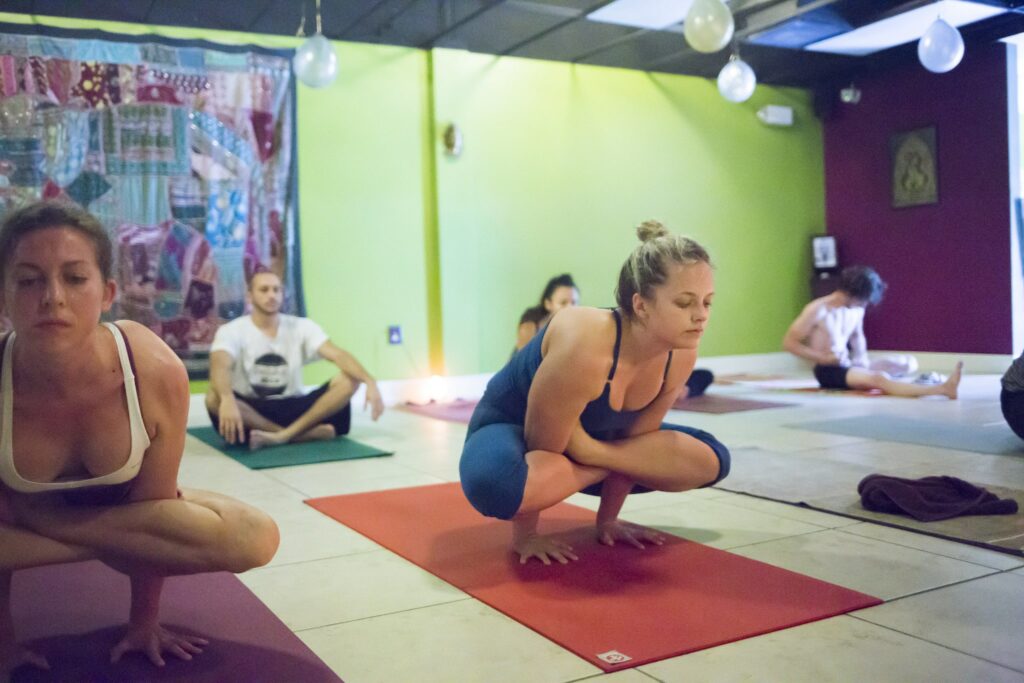
Kukkutasana
Kukkutasana: The Rooster Pose
Kukkutasana, also known as the “Rooster Pose,” is a unique and challenging seated posture that combines balance, strength, and flexibility. It requires the practitioner to engage their core muscles, balance on their hands, and stretch their legs in opposite directions.
Benefits of Kukkutasana:
Kukkutasana, the Rooster Pose, offers a set of unique advantages for practitioners who incorporate it into their practice:
Core Strength:
Balancing the body on the hands while lifting the legs engages the core muscles, contributing to the development of a strong and stable core.
Upper Body Strength:
The posture demands significant upper body strength, particularly in the shoulders, arms, and wrists, helping to build muscular strength and endurance in these areas.
Balancing and Focus:
Kukkutasana requires intense concentration and focus to maintain equilibrium on the hands while extending the legs. This enhances mental clarity and concentration skills.
Flexibility Enhancement:
The pose involves extending the legs while keeping them engaged, promoting hamstring and hip flexor flexibility over time.
Mind-Body Connection:
As with many yoga postures, Kukkutasana nurtures a deeper connection between the body and mind, fostering self-awareness and mindful movement.
Confidence Boost:
Mastering Kukkutasana can boost self-confidence and a sense of accomplishment due to its challenging nature.
It’s important to remember that the benefits of these poses may vary from person to person, and not all benefits may apply to everyone. Furthermore, both Garbha Pindasana and Kukkutasana should be practiced with proper guidance and within the limits of your individual capabilities. Always approach these poses mindfully, listen to your body, and consult with a qualified yoga instructor or healthcare professional if you have any concerns or medical conditions.
Contraindications for Garbha Pindasana & Kukkutasana
While Garbha Pindasana and Kukkutasana can be highly beneficial for many practitioners, it’s important to recognize that certain individuals may need to approach these postures with caution or avoid one or both of them altogether due to specific physical conditions. Here are some contraindications to consider:
Pregnancy:
The nature of Garbha Pindasana involves abdominal compression and rolling motions, which could be unsafe for pregnant women. And Kukkutasana may be unsafe as well, due to the pressure it places on the abdomen and the potential risk of falling. It’s best to avoid this posture during pregnancy to ensure the safety of both the mother and the baby, unless you can practice directly under the guidance of a qualified yoga instructor who can offer safe modifications for you body.
Spinal Issues:
Individuals with severe spinal conditions, such as herniated discs, spinal injuries, or any medical condition affecting the spine’s flexibility and stability, should exercise caution. The rolling and twisting motions in Garbha Pindasana might exacerbate their condition. And Kukkutasana’s demand for balance and support might aggravate your condition.
Hip Injuries:
If you have recent or chronic hip injuries, Garbha Pindasana’s hip-opening and twisting actions may strain the injured area and impede the healing process.
Knee Problems:
People with acute knee issues, such as recent surgeries or ligament injuries, should be cautious when practicing Garbha Pindasana, as the posture involves bending the knees and placing pressure on them.
High Blood Pressure:
The inversion-like nature of Garbha Pindasana could potentially raise blood pressure. If you have hypertension or cardiovascular concerns, consult your healthcare provider before attempting this posture.
Recent Abdominal Surgery:
If you’ve had abdominal surgery, particularly involving the organs in the lower abdomen, Garbha Pindasana’s compressive actions might hinder the healing process or cause discomfort.
Digestive Disorders:
Individuals with severe digestive issues, such as ulcers, colitis, or other gastrointestinal disorders, should approach these poses cautiously, as the abdominal compression might exacerbate their condition.
Beginners or Inflexible Practitioners:
Garbha Pindasana requires a certain level of flexibility and core strength. Beginners or individuals lacking the necessary flexibility might strain their muscles or ligaments while attempting this posture.
Wrist Issues:
Since Garbha Pindasana involves supporting the body’s weight on the hands during the rolling motion, individuals with wrist injuries or weaknesses may find this posture uncomfortable or potentially harmful. Kukkutasana involves supporting a significant portion of your body weight on your hands, so attempting this pose could exacerbate the condition or cause discomfort.
It’s crucial to listen to your body and consult a qualified yoga instructor or a healthcare professional if you have any doubts or existing medical conditions. Yoga practice should always prioritize safety and adaptability to individual needs. If Garbha Pindasana and/or Kukkutasana aren’t suitable for you due to contraindications, there are numerous other yoga poses that can still offer substantial benefits without risking harm.
Click here to watch the YouTube tutorial for Garbha Pindasana and Kukkutasana
Step-by-Step Instructions for the Full Expression of Garbha Pindasana and Kukkutasana with Sanskrit Vinyasa Count
We will be entering this posture from downward facing dog, having just taken a vinyasa after Supta Kurmasana to seated position.
Sapta (Vinyasa #7): From Adho Mukha Svanasana (down dog), Inhale, look forward and walk or jump your feet through and have a seat on the floor with your legs extended in front of you.
Asthau (Vinyasa #8) Exhale, take your legs into lotus position (first bring your right leg into half lotus, then your left). Exhale there. Inhale, bring your left hand to the ground for balance, ground into your sits bones and lift your lotus up. Slide your right arm through your half lotus right leg. This is the area behind and below your knees, next to your upper calves. Then, slide your left arm through your half lotus left leg. Balance solely on your sits bones and reach your hands towards your face, trying to grab your ears with your hands. Take five deep breaths here. Gaze in between your eyebrows (third eye) to Broomadhya Drishti.
Tips:
-
- Let Mula Bandha help you here. Really focus on engaging mula bandha as you inhale and feel how grounded it helps keep your pelvis.
- Press your chin up throughout the asana to help your spine continue to extend upwards.
- Continue to gently engage your thighs throughout the asana to help you maintain integrity in the posture.
Breathing:
-
- The vinyasa count guides your breath. Inhale during the lengthening phases and exhale during the folding phases.
- Maintain deep breathing with sound —a deep, audible breath—throughout the pose to help you stay focused and relaxed.
Nava (Vinyasa #9) Inhale, move your hands from your ears to your forehead. Round your back and tuck your head into your hands. On your exhale, roll your body down and slightly to the side, in a clockwise direction. Inhale, roll your body back up. Repeat this rock and roll 9 times. Always roll down on your exhale, and up on your inhale. As you roll down in this posture, make sure you are rolling on the muscles on the side of your spine. Gaze in between your eyebrows (third eye) to Broomadhya Drishti.
Nava (Vinyasa #9) Inhale, and roll your body up a fifth time, but this time, press your hands to the ground in front of you and lift your body up off the ground, balancing on your hands. Your legs are still in lotus, with your arms interlaced into your lotus legs. Take five deep breaths here. Look in between your eyebrows (third eye) to Broomadhya Drishti.
Dasa (Vinyasa #10) Inhale, lower your hips to the ground. Release your arms from your lotus and release your lotus posture. Cross your legs and lift your body up off the ground.
Ekadasa (Vinyasa #11) Exhale and jump back into Chaturanga Dandasana.
Dvadasa (Vinyasa #12) Inhale into Urdhva Mukha Svanasana(Upward facing dog)
Trayodasa (Vinyasa #13) Exhale into Adho Mukha Svanasana (Downward facing dog)
Tap above or click here to watch the tutorial for Garbha Pindasana and Kukkutasana
Modifications for Garbha Pindasana and Kukkutasana
Modifications for Garbha Pindasana can be helpful for individuals who are working towards the full expression of the pose or have certain physical limitations. These modifications allow you to gradually build strength, flexibility, and comfort in the posture. Here are some modifications to consider:
Hold Ankles:
Instead of taking full lotus position, crossing your legs and grab your opposite foot with your opposite hand (right hand to left foot and left hand to right foot). This greatly reduces the complexity of the pose while still offering a stretch and compression in the abdominal area.
Skip the Rolling Motion:
Instead of rolling back and forth, you can practice the initial seated position with crossed legs and hands holding feet. This helps you focus on the hip opening and spinal flexion aspects without the complexity of rolling.
Assisted Transition:
Have a partner or yoga instructor assist you in the transition from the seated position to the roll and/or the lift into kukkutasana. They can offer support and guidance as you work on finding your balance.
Modifications for Kukkutasana, or the Rooster Pose, can help individuals with various levels of strength and flexibility work towards the full expression of the pose. These modifications allow you to build the necessary skills and gradually improve your practice. Here are some modifications to consider:
Practice Leg Extension Only:
Instead of lifting your entire body off the ground, focus on extending one leg at a time while keeping the other foot grounded. This reduces the balance challenge and allows you to build strength in the arms and core.
Bend Your Knees:
Instead of full lotus, simply cross your legs and either press your feet and hips off the ground or just start with lifting your feet off the ground while keeping your hips grounded. This can make the pose more accessible.
Partner Assistance:
Have a partner or yoga instructor assist you in lifting your feet off the ground. They can offer support and guidance as you work on finding your balance.
Remember that yoga is about progress, not perfection. Listen to your body, and choose modifications that feel comfortable and safe for you. Over time, as you build strength, flexibility, and confidence, you can gradually work towards the full expression of both Garbha Pindasana and Kukkutasana. Consulting a qualified yoga instructor for personalized guidance can be immensely beneficial as you explore modifications and advance in your practice. And be sure to check out our YouTube yoga tutorial on Garbha Pindasana and Kukkutasana for some great modifications for working into this posture.
Practice with The Yoga Shala
If you want to join us for LIVE classes, The Yoga Shala offers virtual and in person classes every weekday morning. We are located at 140 Circle Drive, #4, Maitland, Florida. Owner, Krista Shirley, also offers virtual or in person private sessions (Yoga, Meditation, Breath-work, Nutrition, Life Coaching and Mentorship). Visit theyogashala.com for details.
Be sure to signup for our newsletter to stay on top of local events and classes, Nysa products sales, new offerings, new products and more!
We hope you find this video series helpful to you in creating or maintaining your yoga practice!
About Krista
Krista Shirley is a level II authorized Ashtanga Yoga teacher. She is deeply passionate about sharing these teachings with all who wish to learn.
If you want to join Krista in person she teaches daily classes at The Yoga Shala in Maitland, Florida. She also offers virtual sessions in Yoga, Meditation, Breath-work, Nutrition, Life Coaching and Mentorship. Check out www.theyogashala.com for more details.
If you do not live in Central Florida and want to find an authorized teacher in your area, check out our teacher, Sharath Jois’ website, for a list of all teachers authorized and certified by his yoga centre in India.
|
|
|
|
|
|
|
|
|
|
|
|
❤️SHOP MERCHANDISE: Nysa Products
❤️LET’S BE SOCIAL:
Instagram: Krista Shirley Yoga
Instagram: The Yoga Shala
Facebook: The Yoga Shala
Facebook: KristaShirleyYoga
For other inquires please contact: [email protected]
